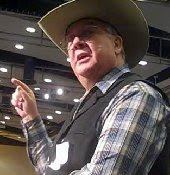THE VAN DER VALK GAS PRICE ADVISORY FOR 3-16-09
US Energy Secretary Stephen Chu's mission accomplished what the Obama administration asked him to do. He was sent to Vienna last week to visit with the Saudis, who are shouldering the brunt of OPEC production cuts, while other non-compliant nations continue to produce barrels beyond their quotas.
Secretary Chu had to impress on all of the oil ministers the urgency of not lowering their oil shipments even more than their quotas. This had to be done in order to assist the US and in turn the world economies in recovering from their current recession. Saudi Arabia is one of the OPEC members actually adhering to its assigned quota.
The stock market continued to rally this morning, which in turn sparked gains for oil futures pulling crude and products prices up out of earlier negative territory. Crude oil passed $46.80 a barrel as the Dow and S&P 500 charged higher for the fifth straight session. Earlier this morning April WTI crude oil prices had dropped $1.50 to less than $45 a barrel on the New York Mercantile Exchange, as the OPEC announcement leaving production quotas unchanged sunk in.
The ministers noted that "the worst global economic recession in decades" had contributed to lower demand for crude oil and said it would continue to monitor cuts made since last October. Their next meeting is scheduled for May with the summer driving season in full swing by then.
One positive aspect of continued lower crude oil prices is that any oil production with higher costs will not find a market, which will assist industries to stay economical. In other words with the cost of energy remaining stable for the remainder of the year our economy should be able to recover from its current recession.
The average price of gasoline in the US was at $1.91 per AAA fuelgaugereport up slightly from last week. But get ready for the big spike in gasoline prices as we warm up from the summer. Last week the temperature in Terry, Montana was a chilly minus 18 degrees F with a wind chill factor of minus 31 degrees F. Today that temperature will soar all the way up to 59 degrees so hope springs eternal that we are coming out of one of the coldest winters in recent history. But with summer around the corner, gasoline prices will go up along with the temperatures around the country.
West Coast gasoline prices have already firmed up some more after units at the Tesoro refinery in Wilmington, CA were taken down for maintenance last Friday Gasoline prices usually spike up with refineries coming out their spring turn-a-rounds. Here is a brief overview of "Gasoline Refining 101" and why gasoline prices go up each time this year.
The transition from winter gasoline results in reducing gasoline supply by 10 per cent over the winter grade. The West Coast refineries start out this process by the middle of February each year with the remainder of the country switching over to the stringent Environmental Protection Agency (EPA) requirements by the middle of April.
In order to meet the stricter summer grade the refineries have to lower the Reid Vapor Pressure (RVP), which is a standard measurement of a liquid's vapor pressure in pounds per square inch at 100 degrees F and is an indication of the propensity of the liquid to evaporate.
Gasoline must have an RVP below 14.7 PSI (pounds per square inch), which is normal atmospheric pressure; if a fuel's RVP were greater than 14.7 PSI, excess pressure would build up in the gas tank, and the fuel could boil and evaporate and cause "knocking" in the engine of your car. Depending on the part of the country, the EPA's standards mandate an RVP below 9.0 PSI or 7.8 PSI for summer-grade fuel. Some local regulations call for stricter standards. Because these varying RVP standards, up to 20 different types of boutiques fuel blends are sold throughout the U.S. during the summer [Source: Slate].
Because RVP standards are higher during the winter, winter-grade fuel uses more butane, with its high RVP of 52 PSI, as an additive. Butane is inexpensive and plentiful, contributing to lower prices. Summer-grade fuel might still use butane, but in lower quantities -- around 2 percent of a blend [Source: The Oil Drum].
Blending alcohol into ethanol gasoline causes an additional problem for refiners in that it causes the RVP to increase once again. For areas of the country with ethanol gasoline the RVP requirement has to be lowered to 5.7 PSI, which means a refinery has to run an additional process in order to meet that standard. That last process is the one causing the supply of gasoline to be reduced by 10 per cent.
Subscribe to:
Post Comments (Atom)

No comments:
Post a Comment